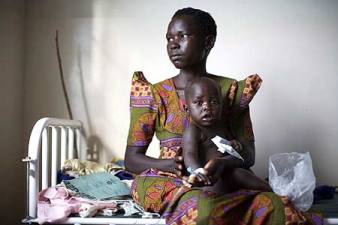Over the month of June I was glued to the television screen viewing the rather phenomenal television series; ‘Indian Hospital’ on Al-Jazeera English. Indian Hospital is a television series that examined the grain of Narayana Hrudalayala (“Temple of the Heart”) hospital/health city unconventional approach to providing first class medi-care to a mainly poor clientele. The Narayana Hrudalayala India health facility is situated in the outskirts of Bangalore (Bengaluru).
The brainchild of Dr. Devi Shetty; a renowned cardiac surgeon, the health facility was started in the year 2000 under the aegis of Asian Heart Foundation (AHF). Since its inception the health facility has grown in leaps and bounds into one of the most important health facility in the globe. For example to date it has performed over 15,000 surgeries on patients from over 25 foreign countries and sees over 12,000 outpatients and consulting patients through its doors on a daily basis, it performs over 24 open heart surgeries and 35 catheterizations every day (almost eight times more than other hospitals). It has turned into a good and reputable port for telemedicine and it offers this service free of charge.
Yet despite catering to so many poor patients, the hospital has employed the Henry Ford industrial model to churn a yearly profit of 7.7% which is much higher than hospitals in the US private hospitals make which have an average profitability of 6.9%. Its industrial scale model approach model to health care means the hospital is able to perform operations with a baseline cost of between 5000US$D and 4000US$D in the USA at only 1800US$D.
The informative six (one hour episodes) of Indian Hospital, opened up my mind to a torrent of questions about the state of Kenyan medi-care and by extension sub-Saharan Africa. For starters “free/subsidized” by the government is archaic, neither is it free nor is it quality medi-care either. For example Kenyatta National Hospital (KNH) which is the largest referral hospital in Kenya is yoked by the usual suspects that strangle all other public bureaucracies; corruption, inefficiency, and myriads of other ills that plague public institutions. At KNH many have died at the casualty ward where serious casualty victims have to wait for more than 11 hours before they get booked into nursing wards and have to wait for at least another 48 hours before they are booked into operating theatres. Most patients who go to KNH either voluntarily or through circumstances effectively place their lives at the mercy of the state. Yet grey areas provided by controversial cost-sharing schemes brought about by structural adjustment programmes have turned government hospitals into cash-cows for health-care bureaucrats. The problem of health care is further compounded by expensive and exclusive private hospitals that are beyond most Kenyans from the poor and lower middle classes.
That is why Dr. Devi Shetty’s and the Naryana Hrudayala’s health-care model needs to be implemented in Sub-Saharan Africa. This indeed would ensure that poverty brought about by catastrophic expenditure in the search for medi-care becomes a thing of the past. This would mean a panacea to Africa’s poor state of health. Indeed it would to a policy shift whereby primary medi-care givers in African countries would be private enterprises incentivized to provide quality medi-care at the lowest nominal fee possible.


